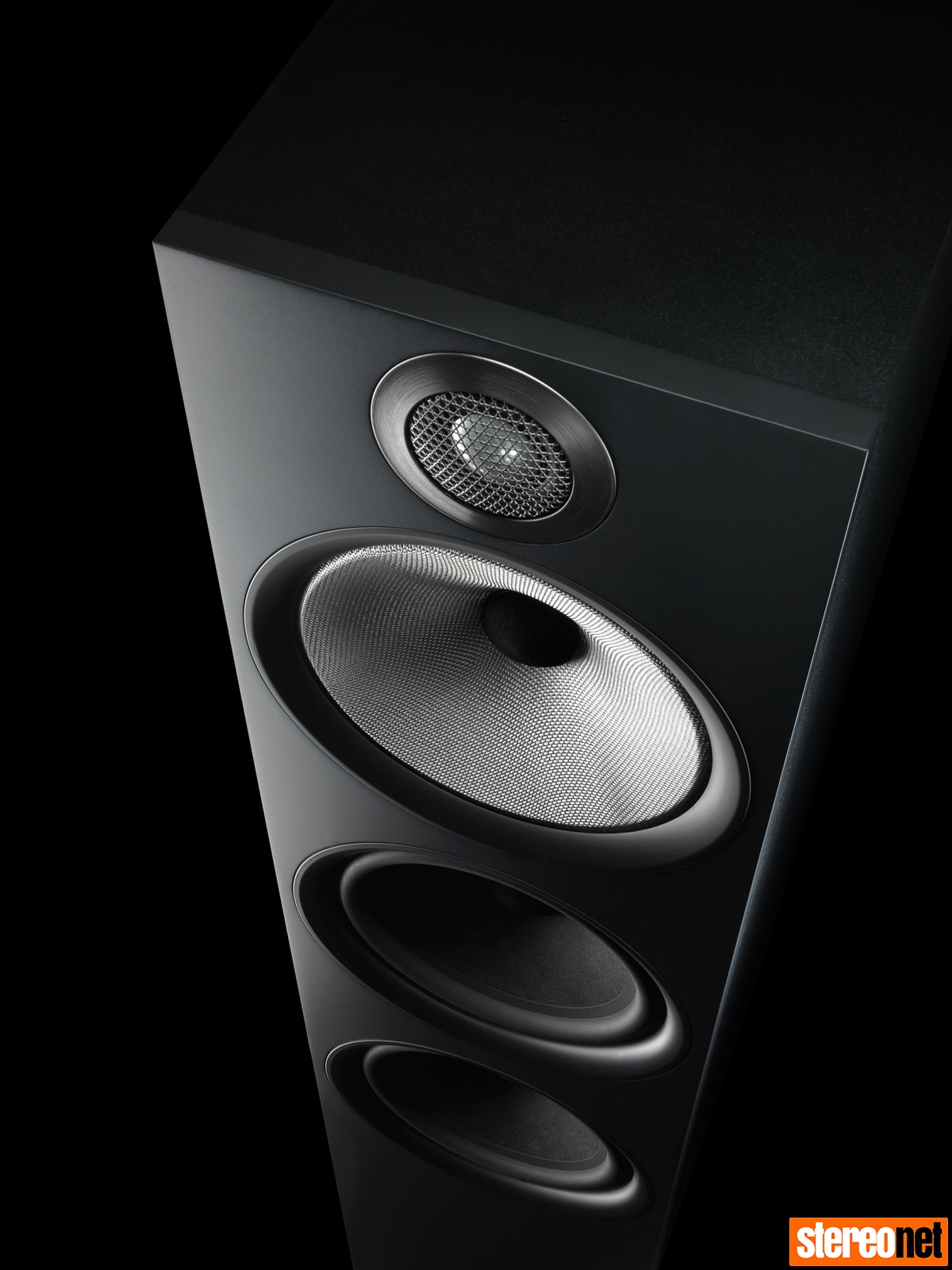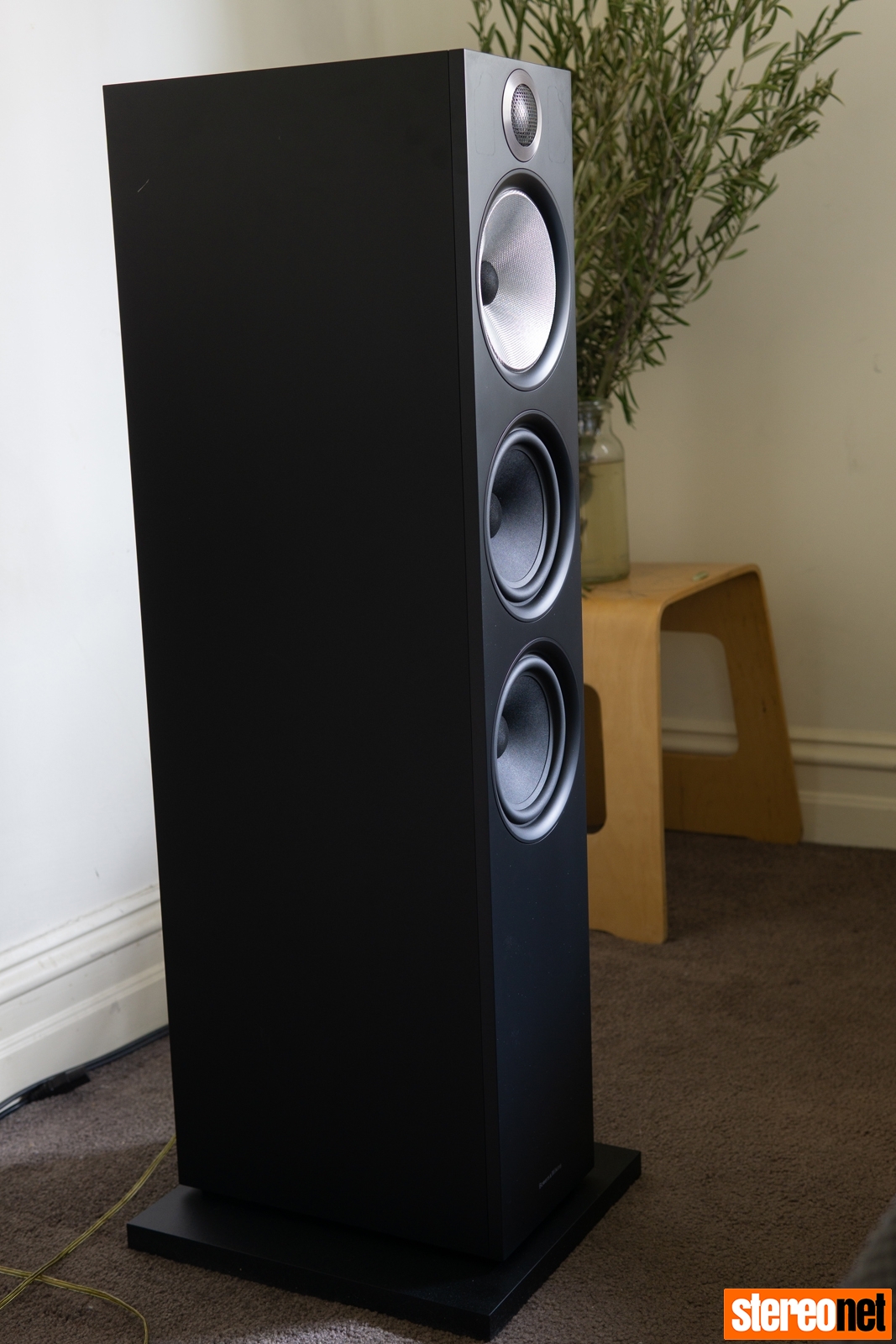Bowers & Wilkins 603 Floor Standing Loudspeakers Review

 The largest speaker in Bowers & Wilkins' latest version of its 600 Series range, we take a closer look at the 603 Floor Standing Loudspeakers.
The largest speaker in Bowers & Wilkins' latest version of its 600 Series range, we take a closer look at the 603 Floor Standing Loudspeakers.
Bowers & Wilkins
603
Floor Standing Loudspeakers
£1,249 RRP (Pair)

The 600 series is the budget-friendly range from Bowers & Wilkins which comprises three different subwoofers, two bookshelf speakers and a centre speaker. Finally, the jewel in the crown of the series is the 603 which is the only floor standing in the range, and the subject of this review.
While the 600 Series was initially released in 2006, the latest version has undergone many refinements and revisions before being launched in October this year.
Coming in just shy of £1,250 the 603 loudspeaker is an affordable way to get into the classic B&W sound in a full format speaker, without breaking the bank.
The 600 Series is offered in two finishes, Matte White or Matte Black.

If B&W’s floor standing speakers were all one big happy family, then the 603 is most certainly the spoilt younger sibling. Similarly, B&W’s 800 Series Diamond range is the esteemed, successful older brother. With a fast-growing list of very positive reviews, the 800 Series Diamond is the cornerstone of what Bowers & Wilkins are all about. Lucky for us, the now-famed Continuum cone has been handed down to the 603 floor standers.
The Continuum cone has a very distinct aesthetic; the mesh look is immediately apparent at first glance. What isn’t so obvious though, is the technology behind it. It took the boffins at B&W 8 years to develop the cone, which is made up of a woven composite material which according to B&W, is similar to Kevlar, but with more improved flexibility and driver control.

Both are a weave of synthetic materials. And while the exact material of this cone isn’t clear, B&W says it has better self-damping and lower noise than Kevlar, and that impulse response is far quicker compared to previous driver technologies.
The latest 600 Series also features an updated version of the tried-and-tested Decoupled Double Dome Tweeter. This technology maintains a dual-layer aluminium diaphragm but has been upgraded with the Neodymium magnet inherited from the 700 Series.

Two 165mm bass drivers, one 150mm midrange Continuum cone driver, and a 25mm tweeter complete the driver line-up for the 603 model.
The 603 has a frequency response of 48Hz - 28kHz (±3dB), and sensitivity is quoted as 88.5dB SPL (2.83V, 1m). B&W suggests a recommended amplifier power between 30w – 200w.
The setup process of these speakers was quick and painless, with Ikea-like instructions for building the plinth to sit underneath the 24kg speakers.
Upon completing the plinth and setting the speakers into place, the exquisite design of the cabinets becomes hard to ignore.
The sleek, hard corners of the enclosure expose a stark contrast to the smooth polished metal surrounding the tweeter. The bright silver meshing of the Continuum cone is subtle enough not to notice at first but adds to the overall feeling of premium Hi-Fi that B&W are so good at giving.
It’s both exciting and intoxicating to be staring at Bowers & Wilkins floor standing speakers at this price point. If the 603s had been the object of an enthusiast’s desire for some time, then they wouldn’t be left disappointed when you take a moment to step back and appreciate them.
The iconic British brand is well known for a level of quality in all products that proudly wear the B&W badge on the front, and the 603 is absolutely no exception to this.

Making the connections, the speaker terminals can be bi-wired, but as is often the case is delivered with a connector plate jumping the two sets of terminals. The chunky, confidence-inspiring terminals look and feel solid with plenty of bite, and give you complete faith that your speaker wire isn’t running away anytime soon.
Included with the 603 floorstanders is an accessory pack which includes two different types of feet for the plinth, as well as custom cutouts to block either all or some of the “Flowport” port on the rear of each of the speakers.

You can also hide the drivers with the included magnetic front panel covers, but I can’t imagine why you would. The 603 looks magnificent with all four of its drivers exposed, and the bold silver colouring of the Continuum Cone makes an impressive first impression.
From the unboxing to set up, through to breathing life into the 603s for the first time, it was an entirely straightforward process.
The first thing that struck me about these floorstanders was the sheer versatility of the sonic signature. They seemed agile enough to deal with fast, animated orchestral stabs, yet also precise enough to accurately reproduce long, winding notes that linger throughout the music.
For example, when listening to I Think So by Rival Consoles, up until the 2:15 mark the track is peppered by short, delicate stabs of synth. They are panned all around the mix, and sometimes only last a few milliseconds each, ranging from 250hz to 4khz in frequency response. The 603’s Continuum cone showed no signs of confusion or muddiness when reproducing the complicated synth notes.
After the synths fall away, this particular track emanates enormous bass slams that are often overwhelming. The 603s handled the bass waves with excellent control, speed and precision, and didn’t overpower any of the lower midrange spectrum while doing so.
The long string notes were reproduced with real clarity and realism, which when I've listened to this track previously through high-end headphones or lesser speakers, doesn’t seem quite right.

Across various tracks, it’s clear that the crossovers are also well designed and doing an excellent job of seamlessly blending each driver.
Dialling it back a little, I settled in to listen to Phone Call (Score) by Jon Brion. This was one of the key tracks from the movie “Eternal Sunshine Of A Spotless Mind”. It’s a great test track, as it uses a neat mix of low-fi guitar samples and higher quality string instruments which all come together in layers for a terrific harmony.
The B&W 603 had no troubles picking apart each instrument, while also exhibiting a surprisingly wide soundstage. At the 0:12 mark is when the first hint of string instruments starts creeping in. With less detailed speakers it can often be a little hard to detect the minor details here. However, I’m happy to report that the 603 reproduces these details with ease.

Another track worth mentioning is Never Call Me by Jhene Aiko, which displays gentle female harmonic vocals, paired with drawn out bass hits and plenty of tiny reverb effects. All of this helps to showcase the sweet mid-highs of the 603, allowing the Aiko’s vocals really to shine, front and centre.
This track still made me reach for my active subwoofer to give the kick drum that little bit more impact. The 600 Series range does include three subwoofer options after all. Dialling in the sub for a bit more bottom end reinforcement delivered exceptional results, and will offer benefits to those using the 603s in a home theatre system.

Conclusion
 Bowers & Wilkins’ 603 is absolutely the floorstander of choice for the money. I seriously doubt that you will find a floor standing speaker with the same brand heritage, beautiful midrange tone, detail, soundstage and versatility, at this price point.
Bowers & Wilkins’ 603 is absolutely the floorstander of choice for the money. I seriously doubt that you will find a floor standing speaker with the same brand heritage, beautiful midrange tone, detail, soundstage and versatility, at this price point.
The addition of a subwoofer just adds to the experience, but unless you are using the 603 floor standing loudspeaker in a home cinema or you prefer a bit more bass, you’ll love them just as much without it.
It seems Bowers & Wilkins has another winner on their hands with the 2018 version of its 600 Series loudspeakers.
For more information visit Bowers & Wilkins.
Matthew Jens
Constantly keeping himself busy, Matthew is a production manager, Brazilian jiu-jitsu blue belt, Head-Fi fanatic, coffee enthusiast and all-round cool Dad.
Posted in: Hi-Fi | Home Theatre
JOIN IN THE DISCUSSION
Want to share your opinion or get advice from other enthusiasts? Then head into the Message
Forums where thousands of other enthusiasts are communicating on a daily basis.
CLICK HERE FOR FREE MEMBERSHIP
Trending
applause awards
Each time StereoNET reviews a product, it is considered for an Applause Award. Winning one marks it out as a design of great quality and distinction – a special product in its class, on the grounds of either performance, value for money, or usually both.
Applause Awards are personally issued by StereoNET’s global Editor-in-Chief, David Price – who has over three decades of experience reviewing hi-fi products at the highest level – after consulting with our senior editorial team. They are not automatically given with all reviews, nor can manufacturers purchase them.
The StereoNET editorial team includes some of the world’s most experienced and respected hi-fi journalists with a vast wealth of knowledge. Some have edited popular English language hi-fi magazines, and others have been senior contributors to famous audio journals stretching back to the late 1970s. And we also employ professional IT and home theatre specialists who work at the cutting edge of today’s technology.
We believe that no other online hi-fi and home cinema resource offers such expert knowledge, so when StereoNET gives an Applause Award, it is a trustworthy hallmark of quality. Receiving such an award is the prerequisite to becoming eligible for our annual Product of the Year awards, awarded only to the finest designs in their respective categories. Buyers of hi-fi, home cinema, and headphones can be sure that a StereoNET Applause Award winner is worthy of your most serious attention.


































